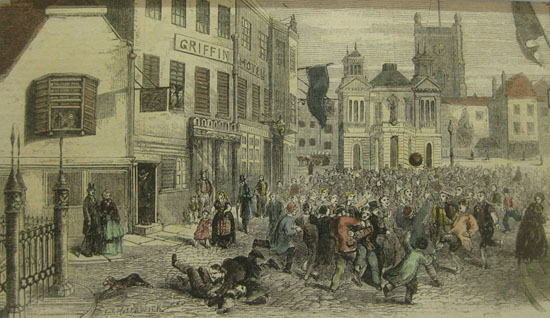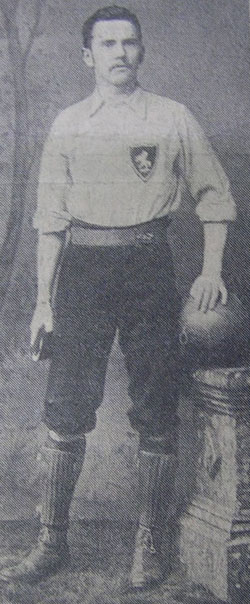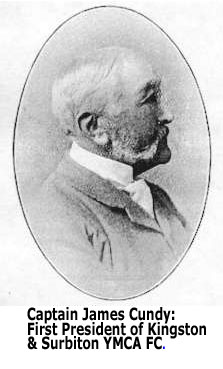|
Kingston
town has a rather spurious claim to be the founders
of football or at least the Medieval version of it. Early football
in Kingston can be traced back to a game involving many of the younger
and rougher townsfolk.
The 'Mob football' match, as it was widely known, commenced with a football
being carried from door to door to beg for 'sponsorship'. Two teams were
formed and the game then kicked off around midday. Goals were at Kingston
Bridge and Clattern Bridge (near the Guildhall) and the pitch stretched
between those locations via the Market Place and Thames Street. Traditionally
the Mayor of Kingston, often with some trepidation and political doubts,
would start the game by throwing the ball from the balcony of the Town
Hall. Prior to this, shops and houses had all been boarded up because
of the reputation for violence. The game itself was a free for all, almost
certainly without rules, and would last around 4 hours when the players
would retire to the pubs to spend their sponsorship money. Anyone who
manged to get hold of the ball and take it into a nearby pub was rewarded
with a gallon of beer although there were plenty of variations on these
general themes over the lifetime of the tradition.
|





